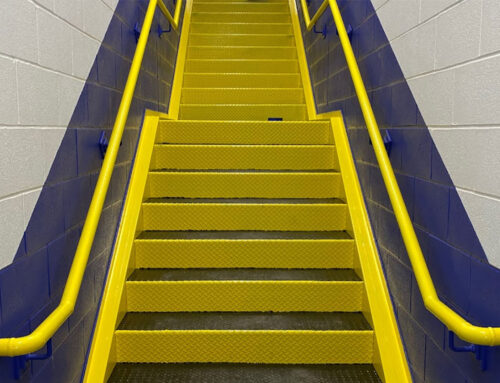For any business to be successful, the owner should know the total cost to complete a project. When it comes to commercial painting and industrial painting, the most obvious cost is that of the paint.
Other costs include new brushes, plaster fillers to repair holes in the walls, painters tape, or payment to additional workers if needed to complete the job. Professional painters should consider costs around equipment, labor, material, and other miscellaneous expenses.
Commercial painting is done in commercial spaces like airports, retail stores, office buildings, and other public locations. Compared to residential painting, commercial painting requires more labor and effort.
Industrial painting is done on large structures like warehouses, which take a long time to complete. It is crucial to carefully plan and estimate industrial painting.
Estimating a commercial paint job can be tricky for people new to the painting business. You don’t want to quote so high that you don’t get the job, nor quote too low that you don’t earn a profit.
Here’s how you can make attractive and profitable estimates for commercial or industrial paint jobs and deliver a quality finished service.
Measure the Area Size
To figure out how much the entire paint job will cost, the first and foremost step is to calculate the size of the area in square footage that is to be painted. Multiply the length by the height of each wall to be painted. Add up the numbers to derive the total square footage.
From this, subtract the areas that won’t be painted, like doors and windows
While estimating the area size, also check the condition of the walls. If the wall is poor or dark, you’ll need more paint. This can help you to estimate costs more accurately.
Cost of the Paint
Usually, one gallon of paint is sufficient to paint 400 square feet if it’s a smooth surface. For a textured surface of 300 square feet, one gallon is sufficient. A gallon of paint costs $15 to $80 depending on the brand and quality.
Don’t forget that you’ll need double the amount of paint if two coats of paint are required.
You can ask your paint supplier to give a contractor discount. If you’re buying massive amounts of paint, the contractor will surely give you a good deal.
Cost of Materials
You must also determine the cost of materials required for the paint job, such as rollers, brushes, drop cloths, paint trays, etc. How much material is required depends on how much preparation is needed.
Figure out what materials you already have and what you need to buy. More preparation means more requirement of caulking and primer.
Labor Cost
Your last step is to consider the number of painters you’ll need to finish the job. Labor cost is estimated by the number of hours a painter takes to paint the area. In an hour, a painter covers around 150-200 square feet. Multiply the hourly labor rate by the number of hours for the job.
Make sure to consider other tasks like scraping, washing, caulking, repairing poor walls, applying primer, etc. Misfortunes like paint spillage, small accidents etc. can happen any time. It’s important to consider a little wiggle room and keep your estimate $50-$100 higher in case of any uncertainties.
Add Your Profits
If you’re new to the business, 30% markup is good. A 50% markup is good if you’re more experienced. Make sure that you’re earning 20-30% markup on all jobs.
Your final estimate will be – Paint cost + Cost of Materials + Labor Cost + Profits = Total Cost
Ready to Get Started?
Have questions about your project or need a quote? We’ve got someone ready to help you.



